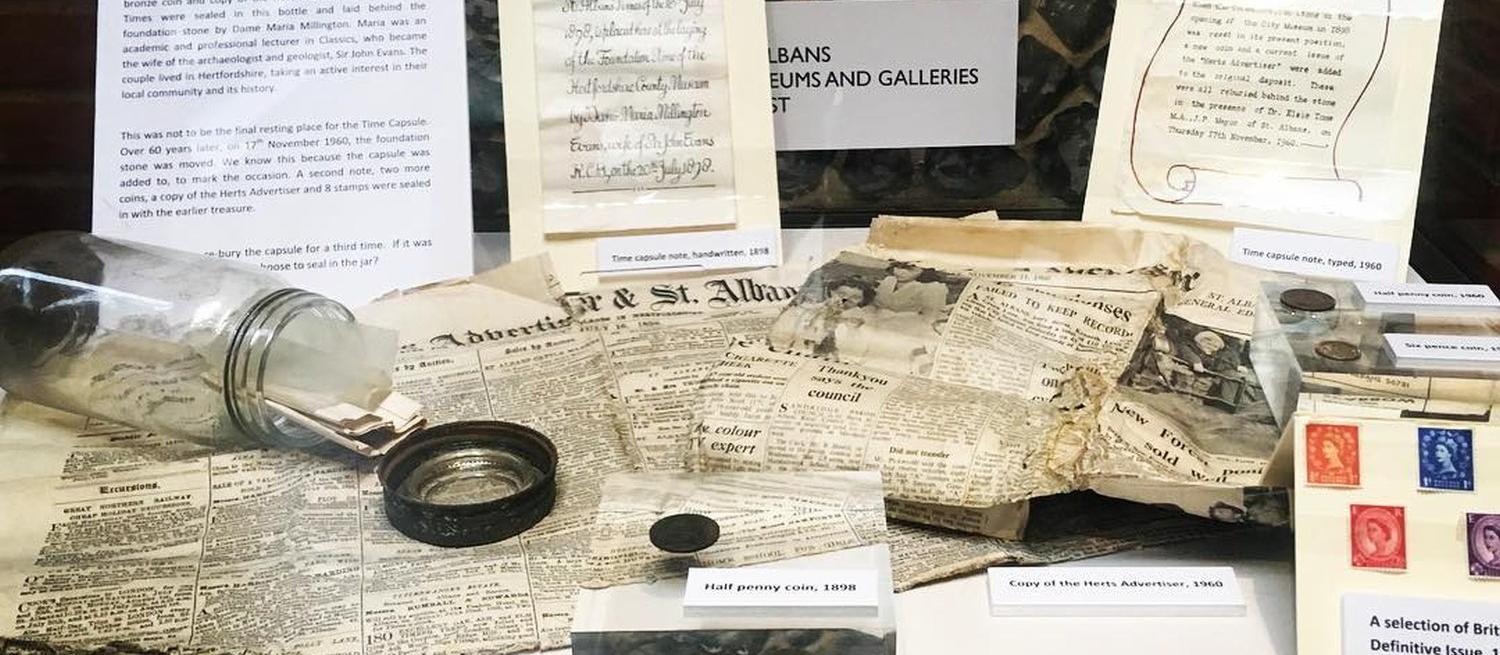When builders started work on converting the old Museum of St Albans in Hatfield Road into houses they made a wonderful discovery- the museum time capsule.
On 20th July 1898, to mark the opening of the museum, a bronze coin and copy of the Herts Advertiser and St Albans Times were sealed in this bottle and laid behind the foundation stone by Dame Maria Millington. Maria was an academic and professional lecturer in Classics, who became the wife of the archaeologist and geologist, Sir John Evans. The couple lived in Hertfordshire, taking an active interest in their local community and its history.
This was not to be the final resting place for the Time Capsule. Over 60 years later, on 17th November 1960, the foundation stone was moved. We know this because the capsule was added to, to mark the occasion. A second note, two more coins, a copy of the Herts Advertiser and 8 stamps were sealed in with the earlier treasure. We have reburied the capsule on the site of the old museum for a third time.
What is a time capsule?
A container filled with objects considered to be typical of the present time, buried for discovery in the future.
Inside the time capsule
- Half penny coin, 1898
- Copy of the Herts Advertiser and St Albans Times, 16th July 1898
- Half penny coin, 1960
- Six pence coin, 1960
- Copy of the Herts Advertiser, 1960
- A selection of British postage stamps, Wildings Definitive Issue, 1952-1968
- Time capsule note, handwritten, 1898
- Time capsule note, typed, 1960
What are Wilding Definitives ?
The “Wildings” was a series of stamps in use in the UK between 1952 and 1968. They are called definitives as they were regular issue, rather than special or ceremonial stamps, that could be bought at any Post Office. They are named after the portrait on them of Queen Elizabeth II by Dorothy Wilding. Dorothy was a very successful photographer and the first woman to be the Official Royal Photographer. In 1937 she covered the Coronation of King George VI and Queen Elizabeth.
The Wilding series was produced during a time of great modernisation of the postal industry. These were the first stamps to have graphite lines on the back and, later, invisible bands of ink on the front. These enabled automatic letter sorting by machine. We take this for granted today, but it was a huge development in technology at the time.
